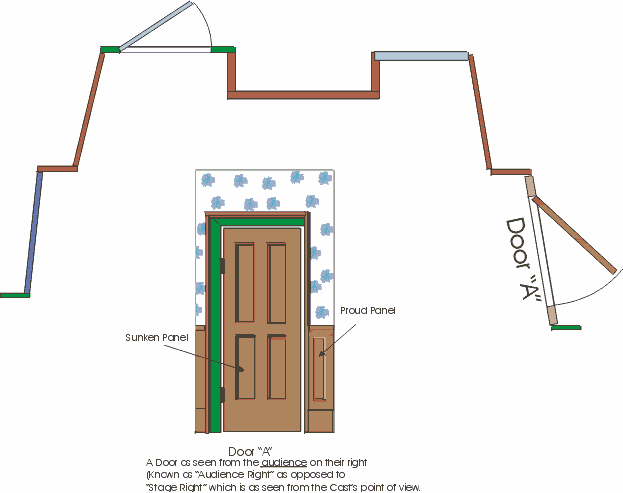
Wallpaper. I'm was delighted to read you are painting
the wallpaper. Often, amateur companies actually wallpaper their
canvas flats, which makes it very hard to remove when using the flats in a future production.
Decide on the base coat of your wallpaper and paint the flats with
that. Then stencil on your pattern. I grew up in the 1940's
in England and can tell you many wallpapers had big (overpowering)
flowers on them. Say, six inches across and about one foot apart. I cut my own stencils using
bought
stencil card from a local art shop. I use a craft knife to cut out
the stencil. However try your local Plastic Vinyl Shop and
Vehicle sign maker who often offer a cheap stencil cutting
service.
In order not to be too overpowering I would choose another hue near to the colour of your base coat. Avoid any contrasting bright colours. Leave that to the people dressing the set using curtains, cushions etc. They can easily change them but you are in big trouble if the producer asks for the wallpaper colour to be changed the night before the performance! Choice of stencil flower? Up to you. I also trudge around each flower, once stenciled, putting in outlines of petals etc. I do a line at a time on each flower to ensure uniformity. But I do not use black for this task.
Finally Distressing Very rarely does any script call
for a brand new interior with pristine wallpaper etc. What gives your
set a lived-in look is the dusting down and distressing of the scenery.
Once you have the set up and fixed together, get an old rag (or
crumpled
up newspapers) and scrub a dark colour along the top edges of the
flats and where they join (especial on "inside" corners.)
Have a rag and
some clean water handy to remove some of the "dirt" if it looks
too old. Be quick in wiping it off otherwise the paint will dry.
Be aware that you are planning to take your set apart and move it to
another
venue. This might mean it would not go together exactly as it did when
you distressed it the first time. You might find you have clean lines
of
colour where
things are not the same. Take some of that "Distressing" colour
and rags etc with you when you set up the scenery at each venue to fix
this problem.
Or nip the problem in the bud before you even get to that stage, by distressing
further into the corners than you really need when first distressing.
If you want to be excessive (but not for "The Mousetrap") then see my answer to a previous question for some thoughts. on distressing. (Close separate window once finished with)
Hope the above helps. Regards Brian